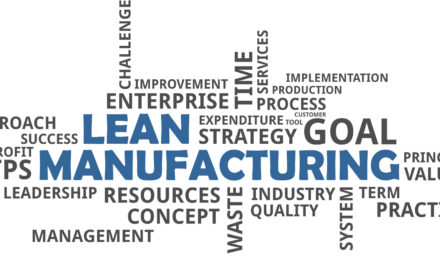Pharmaceutical manufacturing has traditionally been a batch oriented environment that results in an end-to-end process prone to disruption and inefficiency. Today lean manufacturing techniques are beginning to transform the traditional into exceptional for those pharmaceutical companies willing to embrace and follow through with the implementation of a lean manufacturing system. This is exactly what has been taking place at Novartis since 2003, thus making their whole manufacturing process far more streamlined and efficient.
Although other industries have been implementing lean manufacturing solutions for at least a couple of decades, usually with marked success, the pharmaceutical industry in general has been much slower to achieve a successful implementation. Factors contributing to pharmaceutical’s delayed adoption are the batch emphasis, regulatory and compliance complications, the siloed nature of management and functions, and the entrenched mindset. Lean manufacturing, along with eliminating waste, improving efficiency, creating customer value, and striving for continuous improvement, also aims to change culture.
One of the main things lean manufacturing techniques can accomplish is the elimination, or at least reduction, of waste. For pharmaceutical manufacturer’s, waste most often comes in the form of excess inventory and waiting – both of which are primarily due to long lead times resulting from the historical batch orientation, as well as non-value-added activities. When these wastes can be eliminated, the result is a keener competitive edge.
Novartis has now implemented lean manufacturing in most of its 23 worldwide major manufacturing facilities and, according to Tom van Laar, Head of Global Technical Operations at Novartis Pharmaceuticals, “has transformed from a traditional to a Lean organization.” Lean manufacturing seeks to eliminate non-value-added activities and waste at each step in the manufacturing process, thereby improving the process as a whole by allowing a better integration of all the parts. And this, as van Laar explains, was just what Novartis needed: “Because we manufacture across a long supply chain that includes chemical operations, pharmaceutical operations, transportation, warehouse, and distribution, we needed to synchronize the reengineered process so that it goes in a more predictable flow, almost a rhythm.” Striving toward this goal with the help of lean manufacturing techniques has meant, in some cases, an improvement in throughput time of as much as 70%.
A successful implementation of lean manufacturing techniques and the pursuit of lean’s ancillary goal of continuous improvement often require, especially for a pharmaceutical manufacturing firm, a change in culture, in mindsets. Resistance comes from the fact that people don’t want to change their customary way of doing things and from the worry that speeding up processes could lead to compromised quality. But, as van Laar points out, “If you just eliminate the waste and synchronize the supply chain, but you keep high levels of management and functional silos, you still can’t gain the benefits of Lean.”
What Novartis did, then, was to drastically alter organizational structure by jettisoning some functions and eliminating management levels. They also promoted team-building to align everyone with the common goal and, to gain management and employee buy-in, Novartis tracked and published the measurable improvements achieved through lean manufacturing techniques. When people can see the improvements, they are more willing to accept the changes.
Because lean manufacturing implementation is an ongoing pursuit of continuous improvement, Novartis continues to strive for excellence. The goal now is to eliminate the remaining disparate and discrete steps in the manufacturing process to achieve continuous manufacturing. And this will require further, and perhaps yet unseen, changes in organization and culture along with new technology. But the point is that Novartis is still striving for improvement in their manufacturing processes.
Novartis can easily serve, with respect to successfully implementing lean manufacturing techniques, as an exemplar for other pharmaceutical companies. But what must be kept in mind is that Novartis didn’t do it all alone, they utilized the results oriented expertise of lean manufacturing consultants.
To learn more about how lean manufacturing strategies can streamline your business and improve your bottom line, visit Smart Lean Manufacturing .




